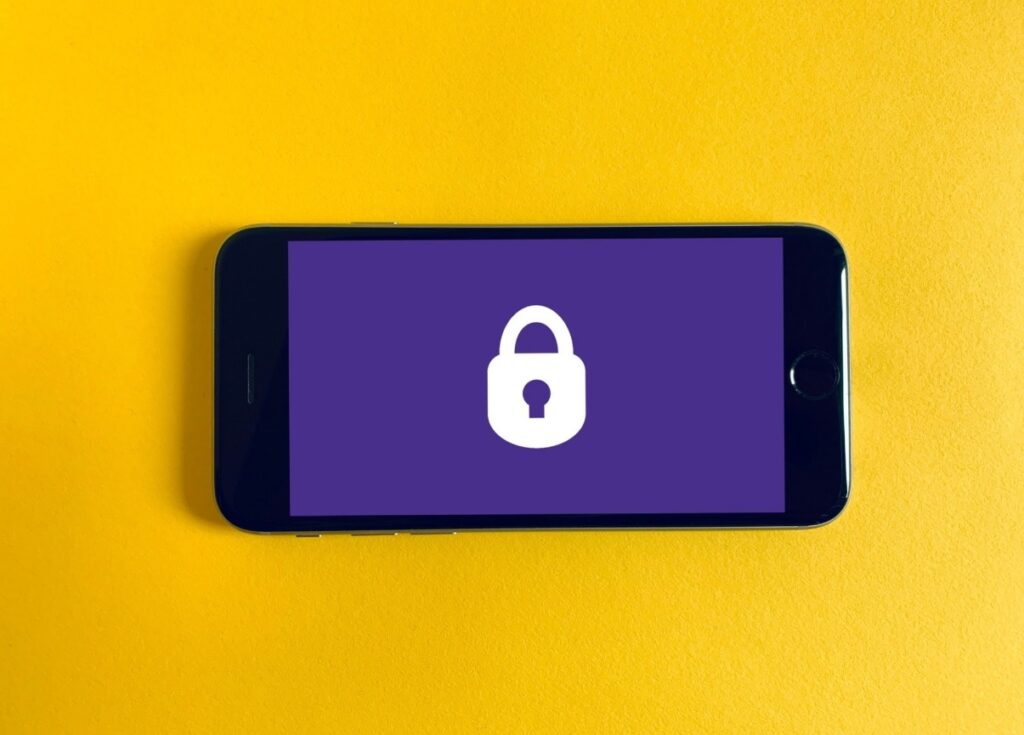
Essential Data Protection Starts With Least Privilege
Essential data protection starts with least privilege: That’s the core message I want to hammer home today. We’re all bombarded with security threats, and it’s easy to feel overwhelmed. But understanding and implementing the principle of least privilege is a surprisingly straightforward way to significantly bolster your defenses. It’s about giving users only the access they absolutely need to do their jobs – nothing more.
This simple act drastically reduces your attack surface and minimizes the damage from potential breaches.
Think of it like this: would you leave your front door unlocked all day, every day? Of course not! Least privilege is about locking down access to your digital assets with the same level of care. We’ll dive into practical ways to implement this, explore its benefits across different systems, and even look at real-world examples of how it’s saved the day (and prevented major headaches!).
Defining Least Privilege

Least privilege, in the context of data protection, is a cornerstone principle emphasizing that users and processes should only have access to the minimum resources necessary to perform their assigned tasks. This principle significantly reduces the potential impact of security breaches, as compromised accounts or malicious processes will have limited capabilities. Think of it as giving someone only the keys to the specific room they need, not the entire building.Least privilege access controls offer numerous advantages.
By restricting access, organizations minimize the attack surface, reducing the risk of data breaches and unauthorized modifications. It simplifies auditing and incident response, as the scope of investigation is significantly narrowed. Furthermore, it strengthens compliance with various data protection regulations, which often mandate the implementation of least privilege principles.
Least Privilege in Different System Contexts
The implementation of least privilege varies depending on the system in question. In operating systems, this might involve assigning users to specific groups with limited permissions. For example, a user might only have read access to certain directories and write access to their personal files. Database systems often leverage least privilege through granular role-based access control, granting specific users or groups permissions to access only the necessary tables and columns.
Applications can implement least privilege by restricting access to internal functions and data based on the user’s role or the context of the request. A web application, for instance, might only allow a user to view their own profile information, rather than the profiles of all other users.
Comparison of Least Privilege with Other Access Control Models
Different access control models exist, each with its own strengths and weaknesses. Let’s compare least privilege with role-based access control (RBAC):
| Feature | Least Privilege | Role-Based Access Control (RBAC) |
|---|---|---|
| Granularity | Highly granular; permissions assigned individually or in very small groups | Moderately granular; permissions assigned based on predefined roles |
| Management Complexity | Can be complex to manage, especially in large systems | Relatively simpler to manage, especially for large user groups |
| Security | Provides the strongest security by minimizing access | Provides strong security, but less granular than least privilege |
| Flexibility | Less flexible; requires careful planning and ongoing maintenance | More flexible; easily adapts to organizational changes |
Implementing Least Privilege
Implementing least privilege isn’t just a security best practice; it’s a fundamental shift in how we approach access control. It requires a proactive and ongoing commitment, impacting everything from initial user onboarding to regular security audits. Successfully implementing it demands a multifaceted approach, encompassing technical solutions, clear policies, and a dedicated team effort.Practical methods for implementing least privilege involve a combination of technological tools and carefully defined processes.
It’s not a one-size-fits-all solution; the specifics depend heavily on the organization’s size, complexity, and the sensitivity of its data. However, certain core principles remain consistent across all implementations.
User Permission Assignment Best Practices
Assigning user permissions based on the principle of least privilege requires a meticulous approach. The guiding principle should always be to grant only the absolute minimum access rights necessary for a user to perform their job functions. This minimizes the potential damage from compromised accounts or accidental misuse. For example, a help desk employee needs access to user accounts for troubleshooting but shouldn’t have the ability to modify payroll information.
This granular control is essential. Effective implementation relies on regular reviews and adjustments to reflect changing roles and responsibilities. A well-defined access control matrix, documenting each role and its associated permissions, is crucial for transparency and accountability.
Least Privilege Access Review Procedure
Conducting a least privilege access review is a systematic process that should be integrated into the organization’s regular security practices. A step-by-step procedure might look like this:
- Identify all users and their current access rights: This involves a comprehensive inventory of all accounts and the permissions assigned to them, often utilizing system auditing tools.
- Define roles and responsibilities: Clearly document the tasks and responsibilities of each role within the organization.
- Determine minimum necessary access rights for each role: For each role, identify the absolute minimum permissions required to perform all assigned tasks. This requires careful consideration of each function.
- Compare current access rights with minimum necessary access rights: Identify any discrepancies between the current permissions and the minimum required permissions.
- Remediate excess privileges: Remove any unnecessary access rights identified in the comparison. This may involve disabling accounts, removing permissions, or modifying access control lists.
- Document changes and maintain an audit trail: Record all changes made to user access rights and maintain a complete audit trail for accountability and compliance purposes.
- Regularly review and update: This process should not be a one-time event but an ongoing cycle, repeated at regular intervals (e.g., quarterly or annually) or triggered by significant organizational changes.
Challenges in Implementing and Maintaining Least Privilege
Implementing and maintaining least privilege presents several significant challenges. One key obstacle is the resistance to change. Users accustomed to broad access rights may initially resist restrictions. Another challenge is the complexity involved in managing granular permissions, particularly in large and complex organizations with numerous applications and systems. Keeping the access control matrix up-to-date and accurate requires significant effort and resources.
Finally, there’s the potential for disruptions to workflows if permissions are improperly configured. Careful planning, thorough training, and ongoing monitoring are vital to mitigate these challenges.
Least Privilege and Data Security Threats
Implementing least privilege is not just a best practice; it’s a fundamental pillar of robust data security. By limiting user access to only the resources absolutely necessary for their job functions, organizations significantly reduce their attack surface and minimize the potential damage from security breaches. This approach directly addresses many common data security threats.Least privilege acts as a powerful preventative measure, reducing the impact of successful attacks and limiting the scope of potential data breaches.
It’s a proactive strategy that strengthens an organization’s overall security posture, complementing other security measures like firewalls and intrusion detection systems.
Common Data Security Threats Mitigated by Least Privilege
Least privilege directly counters several prevalent threats. For example, malware often relies on elevated privileges to spread and encrypt files. By restricting access, even if malware is successfully installed, its ability to cause widespread damage is severely curtailed. Similarly, phishing attacks, which often aim to gain unauthorized access, are less effective when users lack the necessary privileges to exploit compromised credentials.
Insider threats, whether malicious or accidental, are also significantly mitigated as even compromised employees have limited access.
The Impact of Privilege Escalation on Data Security
Privilege escalation, the act of gaining higher-level system privileges than initially granted, is a critical concern. Successful privilege escalation can transform a minor security incident into a major data breach. Imagine a scenario where a user with limited access gains administrator rights due to a vulnerability in the system. This allows them to access sensitive data, modify system settings, and install malicious software with ease, leading to extensive damage and data loss.
The impact is amplified if the attacker gains domain administrator privileges, granting near-total control over the network. The consequences can include data exfiltration, system sabotage, and significant financial losses.
Effectiveness of Least Privilege Against Different Attack Vectors
Least privilege offers varying degrees of protection against different attack vectors. Against malware, it limits the damage a successful infection can cause. If a user’s account has limited privileges, even if malware gains control of that account, it can’t access sensitive data or system resources that require higher privileges. Against insider threats, it reduces the potential damage a malicious or negligent employee can inflict.
Even if an employee has malicious intent, their limited privileges restrict their ability to compromise critical systems or data. Against phishing attacks, least privilege limits the impact of a successful compromise. Even if a user falls victim to a phishing scam, their limited privileges restrict the attacker’s ability to access sensitive information or perform damaging actions.
Security Vulnerabilities Exacerbated by Excessive User Privileges
Excessive user privileges significantly amplify several security vulnerabilities:
- Data breaches: A compromised account with extensive privileges provides attackers with direct access to sensitive data, leading to significant data loss and potential regulatory fines.
- Malware infections: Malware can leverage elevated privileges to spread rapidly, encrypt data, and disable security mechanisms, resulting in extensive system damage and data loss.
- Insider threats: Employees with excessive privileges have greater opportunities to misuse their access, leading to data theft, sabotage, or accidental data deletion.
- System instability: Users with excessive privileges might inadvertently make changes that destabilize the system, leading to downtime and data loss.
- Compliance violations: Failure to adhere to least privilege principles can lead to non-compliance with data protection regulations like GDPR or HIPAA, resulting in hefty fines and reputational damage.
Least Privilege and Compliance: Essential Data Protection Starts With Least Privilege
Implementing least privilege is not just a best practice for data security; it’s a crucial component of compliance with numerous data protection regulations. By limiting access to only what’s necessary for a specific role or task, organizations significantly reduce their risk exposure and demonstrate a commitment to robust data protection. This approach simplifies audits and strengthens the overall security posture, making compliance efforts smoother and more effective.Least privilege directly supports compliance by minimizing the potential impact of data breaches.
If a user account is compromised, the damage is limited to the specific data the user had access to. This contrasts sharply with situations where users have excessive privileges, where a single breach could expose a vast amount of sensitive information. This inherent limitation of potential damage is a significant factor in demonstrating due diligence and meeting regulatory requirements.
Least Privilege and GDPR Compliance
The General Data Protection Regulation (GDPR) emphasizes data minimization and purpose limitation. Least privilege aligns perfectly with these principles. By granting only the necessary access rights, organizations ensure they are only processing the minimum amount of personal data required for a specific purpose. This minimizes the risk of accidental or malicious data breaches and simplifies compliance with GDPR’s stringent requirements around data processing.
For example, a marketing team member might only need access to customer email addresses and purchase history, not their full medical records or financial information. This granular control directly supports GDPR’s principles.
Least Privilege and CCPA Compliance
Similarly, the California Consumer Privacy Act (CCPA) requires businesses to implement reasonable security measures to protect consumer data. Least privilege plays a vital role in fulfilling this obligation. By limiting access based on roles and responsibilities, organizations reduce the risk of unauthorized access, use, or disclosure of personal information. This minimizes the likelihood of CCPA violations, such as failing to implement appropriate security measures to protect personal information.
A customer service representative, for instance, might only need access to a customer’s order history and contact details, not their credit card information or social security number. This level of restricted access helps demonstrate compliance with CCPA’s security requirements.
Demonstrating Due Diligence Through Audit Trails
Comprehensive audit trails and logging are essential for demonstrating due diligence in data protection. These mechanisms provide a detailed record of all access attempts, successful or unsuccessful, and help pinpoint potential security breaches. By correlating access logs with least privilege policies, organizations can demonstrate that only authorized users accessed specific data and only within the limits of their assigned privileges.
For example, a log entry might show that user “John Doe” (a marketing analyst) attempted to access financial data at 10:00 AM on October 26th, but the access was denied because his role does not include permissions to access this type of data. This demonstrates the effectiveness of the least privilege policy and provides irrefutable evidence of compliance efforts.
Designing an Access Control Policy Aligned with Least Privilege, Essential data protection starts with least privilege
An effective access control policy based on least privilege requires a careful analysis of roles and responsibilities within the organization. This involves identifying specific tasks and the minimum data access required for each task. The policy should then define roles and assign only the necessary permissions to each role. Regular reviews of these roles and permissions are crucial to ensure that privileges remain appropriate and are not unnecessarily broad.
This process involves a structured approach to risk assessment and access control, minimizing vulnerabilities and simplifying compliance audits. For example, a carefully designed access control matrix could clearly Artikel that only users with the “Finance Manager” role have access to sensitive financial reports, while other roles, like “Sales Representative,” only have access to customer contact information relevant to their sales activities.
Tools and Technologies for Least Privilege

Implementing least privilege effectively requires robust tools and technologies. These solutions automate the process, ensuring consistent enforcement and reducing the administrative overhead associated with manually managing permissions. The right tools can significantly improve security posture and compliance efforts.
Several categories of tools facilitate least privilege implementation. These range from simple access management systems to sophisticated privilege management solutions, each offering a different level of granularity and automation.
Access Management Systems (AMS)
Access management systems form the foundation of least privilege implementation. They control user access to resources, ensuring only authorized individuals can access specific data or functionalities. Features like role-based access control (RBAC) and attribute-based access control (ABAC) are crucial for defining and enforcing least privilege. For example, an AMS might grant a marketing team member access to customer relationship management (CRM) data but restrict access to financial records.
Strong auditing capabilities within the AMS are also essential to track access attempts and identify potential security breaches.
Privilege Management Solutions (PMS)
Privilege management solutions build upon access management by providing more granular control over privileged accounts. These accounts, often possessing extensive system-level access, are prime targets for attackers. PMS solutions often incorporate features like just-in-time (JIT) privilege elevation, session monitoring, and password management. JIT allows privileged access only when needed, for a defined period, minimizing the window of vulnerability. Session monitoring allows administrators to observe and record activities performed by privileged users, aiding in the detection of malicious behavior.
Effective password management helps prevent unauthorized access to privileged accounts through strong password policies and secure password storage.
Identity Governance and Administration (IGA)
IGA solutions extend beyond basic access management and privilege management, encompassing the entire lifecycle of user identities and access rights. They offer automated provisioning and de-provisioning of user accounts, ensuring that access is granted and revoked consistently based on role and need. This automation significantly reduces manual errors and simplifies the management of large numbers of user accounts, a key element in enforcing least privilege across a diverse organization.
IGA systems often integrate with other security tools, providing a comprehensive view of identity and access management.
Comparison of Least Privilege Tools
Different tools offer varying levels of sophistication and capabilities. The best choice depends on the organization’s size, complexity, and specific security requirements.
| Tool Type | Capabilities | Limitations | Suitable for |
|---|---|---|---|
| Access Management System (AMS) | Role-based access control, granular permission management, auditing | May require manual configuration for complex scenarios, less focus on privileged accounts | Small to medium-sized organizations, basic security needs |
| Privilege Management Solution (PMS) | Just-in-time access, session monitoring, privileged account management | Can be complex to implement and manage, higher cost | Organizations with many privileged accounts, high security needs |
| Identity Governance and Administration (IGA) | Automated provisioning and de-provisioning, lifecycle management, integration with other security tools | High initial investment, requires specialized expertise | Large organizations with complex IT infrastructure, high compliance requirements |
User Training and Awareness
Effective data protection through least privilege relies heavily on user understanding and cooperation. A well-designed training program is crucial for mitigating risks associated with excessive privileges and fostering a security-conscious culture. Without user buy-in, even the most robust technical controls can be undermined.A comprehensive training program should go beyond simply explaining the concept of least privilege. It needs to connect the principle to real-world scenarios and demonstrate its value in protecting sensitive data.
Employees must understand not only why least privilege is important but also how it impacts their daily work.
Least Privilege Training Program Design
The training program should be modular, allowing for customization based on employee roles and responsibilities. It should begin with an overview of the concept of least privilege, explaining it in clear, non-technical terms. This initial module should emphasize the “why” – why the company is implementing least privilege and how it benefits both the organization and the individual employees.
Subsequent modules should focus on practical application, including role-specific scenarios and examples of how to request additional privileges when needed. The program should incorporate interactive elements, such as quizzes and simulations, to reinforce learning and encourage active participation. Regular refresher training should be scheduled to maintain awareness and address any changes in security policies or procedures. Finally, the training should clearly Artikel reporting procedures for suspected security breaches or unauthorized access attempts.
Effective Communication Strategies for Least Privilege Awareness
Effective communication is key to promoting least privilege awareness. Employ a multi-faceted approach, utilizing various communication channels to reach employees effectively. This includes incorporating least privilege principles into existing security awareness training programs, creating engaging and easily digestible infographics and short videos explaining the concept, and distributing regular email updates highlighting recent security incidents and the role of least privilege in preventing them.
Consider using interactive tools, such as gamification, to make learning fun and engaging. Regularly scheduled town hall meetings or webinars can provide a platform for addressing employee questions and concerns directly. Finally, establish clear communication channels for employees to report any concerns or difficulties they encounter when adhering to least privilege principles.
User Education in Mitigating Excessive Privileges Risks
User education plays a vital role in mitigating the risks associated with excessive privileges. Employees with excessive privileges represent a significant security vulnerability. Comprehensive training helps users understand the potential consequences of their actions, such as accidental data breaches or unauthorized access. It equips them with the knowledge and skills to identify and report suspicious activities. Training should also cover the proper procedures for requesting and managing access privileges, ensuring that requests are justified and reviewed appropriately.
By empowering users with the right knowledge and skills, organizations can significantly reduce the likelihood of security incidents resulting from excessive privileges.
Fostering a Security-Conscious Culture Embracing Least Privilege
Creating a security-conscious culture that embraces least privilege requires a long-term commitment from leadership and employees alike. This involves establishing a clear security policy that explicitly Artikels least privilege principles and expectations, coupled with consistent enforcement. Recognize and reward employees who actively demonstrate a commitment to security best practices, including adhering to least privilege guidelines. Encourage a culture of open communication where employees feel comfortable reporting security concerns without fear of reprisal.
Solid data protection hinges on the principle of least privilege; granting only necessary access. This becomes even more critical in the cloud, which is why understanding tools like those discussed in this excellent article on bitglass and the rise of cloud security posture management is so important. Ultimately, effective cloud security, and therefore robust data protection, relies heavily on this foundational principle of least privilege.
Regularly assess and update security policies and training programs to reflect evolving threats and best practices. This ongoing commitment to security awareness and education will create a strong foundation for a robust and effective least privilege implementation.
Case Studies and Examples
Real-world examples of least privilege implementation highlight its effectiveness in bolstering data security and minimizing the impact of potential breaches. Understanding these successes and failures provides valuable insights for organizations seeking to enhance their own security posture. Let’s examine some case studies that illustrate both the benefits and the potential consequences of neglecting least privilege.
A Real-World Example of Least Privilege Preventing a Data Breach
A major financial institution implemented a strict least privilege policy across its network. A malicious actor gained access to a low-level employee’s account through a phishing attack. However, due to the limited permissions granted to that account, the attacker could only access a very restricted set of files and applications. They were unable to access sensitive customer data or critical internal systems. The incident was contained quickly, with minimal damage, largely due to the effectiveness of the least privilege policy. The attacker’s actions were logged, allowing for a rapid investigation and improved security measures. This case demonstrates how even when a breach occurs, least privilege can significantly mitigate its impact.
Organizations Successfully Implementing Least Privilege
Several organizations have publicly acknowledged the benefits of implementing least privilege. While specific details are often kept confidential for security reasons, the general benefits are consistent across various industries. For example, many healthcare providers have implemented granular access controls to protect sensitive patient data, complying with regulations like HIPAA. Similarly, financial institutions leverage least privilege to protect customer financial information and adhere to regulatory compliance standards.
Solid data protection hinges on the principle of least privilege; granting only necessary access. This is especially crucial when building applications, and the rise of low-code/no-code platforms like those discussed in this insightful article on domino app dev the low code and pro code future highlights the need for careful access control design from the ground up.
By implementing least privilege early, we minimize the impact of potential security breaches, making our applications more robust and secure.
These organizations have reported reduced risk of data breaches, improved operational efficiency due to streamlined access management, and a stronger overall security posture. The positive impact is often reflected in reduced insurance premiums and increased stakeholder confidence.
A Hypothetical Scenario Illustrating the Consequences of Failing to Implement Least Privilege
Imagine a software company that fails to implement a robust least privilege policy. A disgruntled employee, with administrator-level access to all systems and data, decides to exfiltrate sensitive customer information and intellectual property before resigning. Due to their unrestricted access, the employee can easily copy large amounts of data, leaving little to no audit trail. The data breach results in significant financial losses, legal repercussions, reputational damage, and loss of customer trust. The lack of least privilege significantly amplified the damage caused by a single malicious actor. The cost of remediation and the long-term impact far outweigh the investment required to implement a proper least privilege system.
Wrap-Up
So, there you have it – a journey into the world of least privilege. While it might seem like a small change, the impact of implementing this principle is huge. From minimizing the damage of successful attacks to simplifying compliance efforts, least privilege is a foundational element of robust data protection. It’s not just about ticking boxes; it’s about building a proactive, resilient security posture.
Remember, empowering your team with the right level of access – and nothing more – is the key to a safer digital world.
Essential FAQs
What happens if I give a user too many privileges?
Giving a user excessive privileges significantly increases your attack surface. If their account is compromised, the attacker gains access to far more data and systems than they should.
How do I determine the “least” privilege for a user?
Start by defining the specific tasks a user needs to perform. Then, grant only the minimum necessary permissions to accomplish those tasks. Regularly review and adjust permissions as roles and responsibilities change.
Is least privilege difficult to implement?
Implementing least privilege requires planning and a shift in mindset, but it’s not insurmountable. Start with a pilot program, focusing on a specific department or system. Use automated tools to help manage permissions.
What if least privilege hinders productivity?
Properly implemented least privilege shouldn’t significantly impact productivity. Well-defined roles and clear access guidelines can ensure users have everything they need to do their jobs efficiently.





